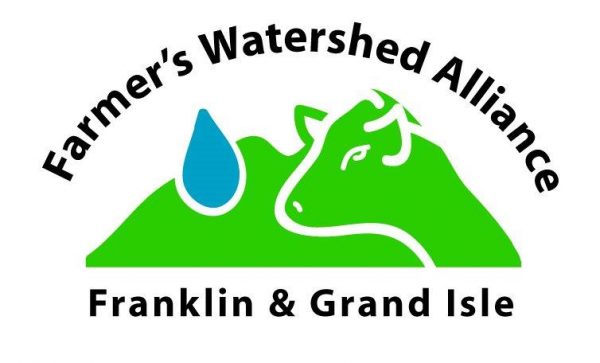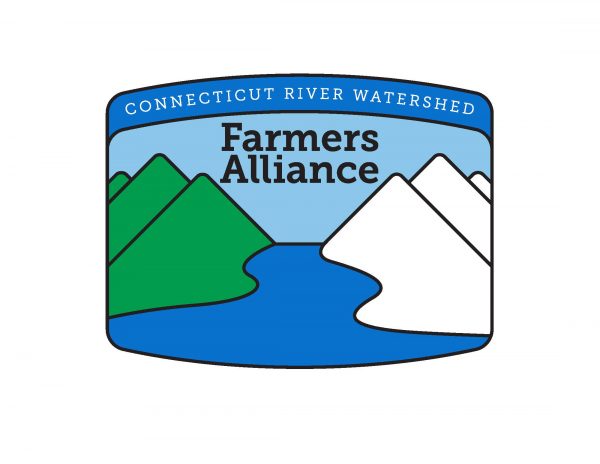Soil health is crucial to the health of our water and food supply. Our global population is expected to grow to more than 9 billion by 2050! How will we grow all that food? With the help of farmers.
Farmers live on the land they farm. They understand the importance of protecting our natural resources. According to the Natural Resources Conservation Service, soil is being depleted 18 times faster than it is being built up by nature. Farmers are currently adopting many new and innovative practices to prevent soil erosion in agriculture. The health of our food supply, water, and land depends on it.
Here are four ways farmers are saving our soil and water:
1. Farm fields are covered with plants all year long, even in the winter. It’s called cover cropping and combined with no-till planting – it is amazing for soil.
After farmers harvest their main crop, like corn, in the fall – they plant cover crops that grow through the winter on the same field. Vermont farmers planted a record-setting 25,727 acres of winter cover crops on more than 2,000 fields in 2016, and they broke that record in 2017 with just over 26,000 acres. That’s approximately 25 percent of all annual cropland in Vermont and over a 60 percent increase in the acres of protective winter cover crops planted since 2015!
Those plants help the soil hold a lot of water and create healthy living organic matter. Research has shown that every one percent increase in organic matter through using cover crops helps the soil to hold 25,000 gallons more water per acre!
Winter cover crops include plant species like winter cereal rye, annual ryegrass, oats, clover, vetch and even radish and turnip.
In the spring, farmers remove the cover crop either by flattening it with a roller crimper machine, harvesting it for their cows to eat, or removing it in an environmentally responsible and non-disruptive way. Then they plant their corn on the same field without tilling the soil using a no-till drill. With this piece of equipment, farmers plant crops in a less disruptive way to the soil ecosystem — discs make a small opening in the dirt, the machine drops in seeds at a pre-determined rate, and then closes the hole back up. This technology improves soil health, increases water absorption and significantly reduces the chance for runoff into waterways.
2. Farmers test the nutrient content in soil regularly. They use the data to figure out how much additional nutrients the field needs, in the form of manure, to be healthy.
Farms are required to have nutrient management plans that guide the amount, source, placement and timing of manure on fields. These plans are reviewed by government agencies and environmental experts.
Larry Gervais, of the Gervais Family Farm in Enosburg Falls, VT takes hundreds of soil samples every year to determine what nutrients the soil needs to grow the crops. Sample results are used for the farm’s soil nutrient management plan. Larry can then provide the right amount of nutrients to grow healthy crops that in turn feed the cows.
3. Farmers use high-tech equipment to inject manure up to 12-inches underground to feed the soil much-needed nutrients. This prevents nutrients from leaving the field when it rains.
Sustainable and regenerative agriculture practices are evolving rapidly. Vermont farmers partnered to make the below video to show the public how a technology called manure injection works.
4. Dairy farms recycle the water used on the farm many times.
They collect rainwater from barns and reuse the water that cools down the milk as water for the cows to drink. After the barn is cleaned, the water is used on the fields. Today, U.S. dairy farmers use 65% less water to make the same gallon of milk compared with 1944.
Dairy farms in the U.S. are the most efficient in the world with their resource use. U.S. dairy cows produce the lowest amount of greenhouse gases per gallon of milk compared to all other countries in the world (dairy is 2% of total U.S. GHG).
Want to learn more?
One of the best ways to learn about sustainability on farms is to visit a local farm near you and talk to the farmers who make your food. In Vermont, three farmer non-profit organizations have formed to help farmers and the general public learn more about environmentally friendly practices on farms.
Farmers Watershed Alliance was established in 2006 in Northern Vermont and focuses on farms in Franklin and Grand Isle Counties. In 2016 a total of 10,155 acres of cover crops were planted on these farms.
Champlain Valley Farmer Coalition was established in 2013 and includes farmers in Addison, Chittenden, and Rutland Counties. They planted 9,100 acres of cover crops last year, an increase of more than 30 percent compared to 2015.
Connecticut River Watershed Farmers Alliance, just organized in 2016 and represents farmers in seven Vermont and New Hampshire counties throughout the Connecticut River region.





